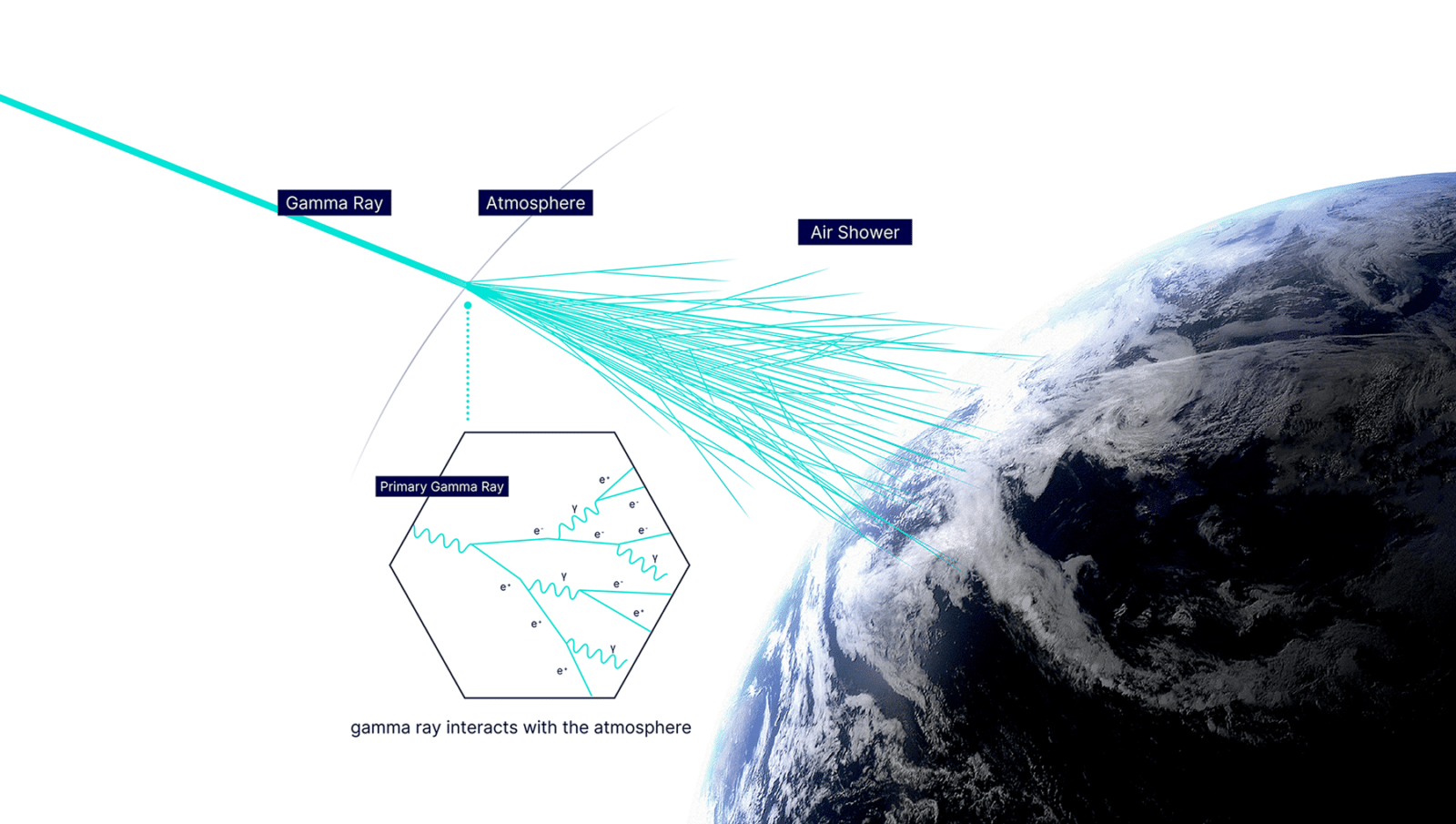The Cherenkov Effect
When gamma rays reach the Earth’s atmosphere they interact with it, producing cascades of subatomic particles. These cascades are also known as air or particle showers. Nothing can travel faster than the speed of light in a vacuum, but light travels 0.03 percent slower in air. Thus, these ultra-high energy particles can travel faster than light in air, creating a blue flash of “Cherenkov light” (discovered by Soviet physicist Pavel Cherenkov in 1934) like the sonic boom created by an aircraft exceeding the speed of sound. Although this Cherenkov light is spread over a large area (250 m in diameter), it only lasts a few billionths of a second. It’s too faint and fast for the human eye to see but not for the sensitive light sensors of the CTAO’s telescopes.

The Light Catchers
These cascades are so rare that the CTAO will be using more than 60 telescopes spread between two array sites in the northern and southern hemispheres to improve our chances of capturing them. When the Cherenkov light reaches the CTAO’s telescopes, the mirrors reflect the light so the cameras can record the event, capturing a billion frames per second.
From Light to Data & Discovery
The cameras use extremely fast sensors that are able to detect a single photon. They capture the light and then convert it into an electrical signal that is digitised and transmitted so that scientists can study it and discover more about the gamma-ray’s cosmic source.